Lupins are gaining in popularity, and it's easy to see why. Flowering in late spring and early summer, these colourful perennials provide colourful vertical accents in our borders. They are suited to many types of planting schemes, including cottage gardens and traditional herbaceous borders.
Lupin hybrids have been popular since garden designer Gertrude Jekyll advocated their use as strong vertical accents in borders among irises and lilies. She was particularly fond of white lupins.
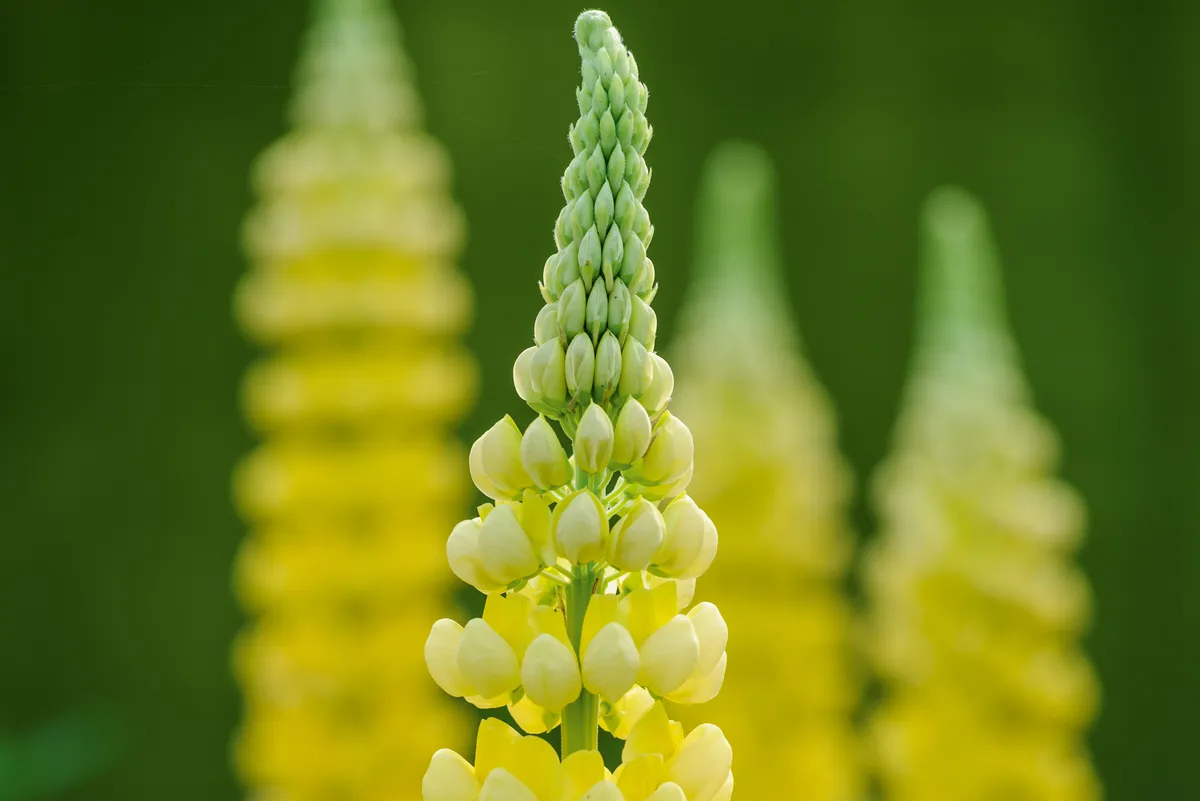
Modern gardeners have George Russell to thank for the vibrant array of lupins that are available today. A jobbing gardener, he was in his 50s when he decided to breed lupins that had the vigour and colour that was missing from the ones he knew. Working alone on his allotments, he crossed seedlings, ruthlessly weeding out the inferior ones and recrossing the best, until he had produced a range with flowers of dazzling colours, from the palest pink to darkest crimson, and white, yellow, orange and red, some single and some bicoloured. In 1937, at the age of 79, Russell exhibited his plants at the RHS Chelsea Flower Show, where he caused a sensation.
The latest baton-holder in the lupin relay is Sarah Conibear. Some of her first seed came from an amateur gardener who had lived near George Russell's lupin fields and who had continued to propagate Russell's plants. Sarah is now raising cultivars at her nursery, Westcountry Lupins, that are delighting a new generation of gardeners.
Jump to
- How to deadhead lupins
- Where to grow lupins
- When to plant lupins
- How to grow lupins from seeds
- What to do with lupins after flowering
- Lupins in pots
- Lupin problems
- When do lupins flower?
- Are lupins perennial?
- Lupin types
- 14 lupins to grow
How to grow lupins
How to deadhead lupins
Deadhead by cutting the flower and its stem down to the base.

Where to grow lupins
Lupins are best grown in full sun, in an open situation and in well-drained soil. In rich soil they produce lots of foliage and few flowers, so don’t add manure to the soil before you plant them. Conventional wisdom has it they won’t grow on chalky soils but, while they are more vigorous in acidic loam, they do grow perfectly well on my chalky soil.
When to plant lupins
Sow lupins in late spring or early summer.
How to grow lupins from seeds
Lupins can be tricky to grow from seed. For the best results, sow seeds in spring, nicking them with a knife and soaking in water for 24 hours beforehand. You may find it easier to take basal cuttings from your existing plants in spring.
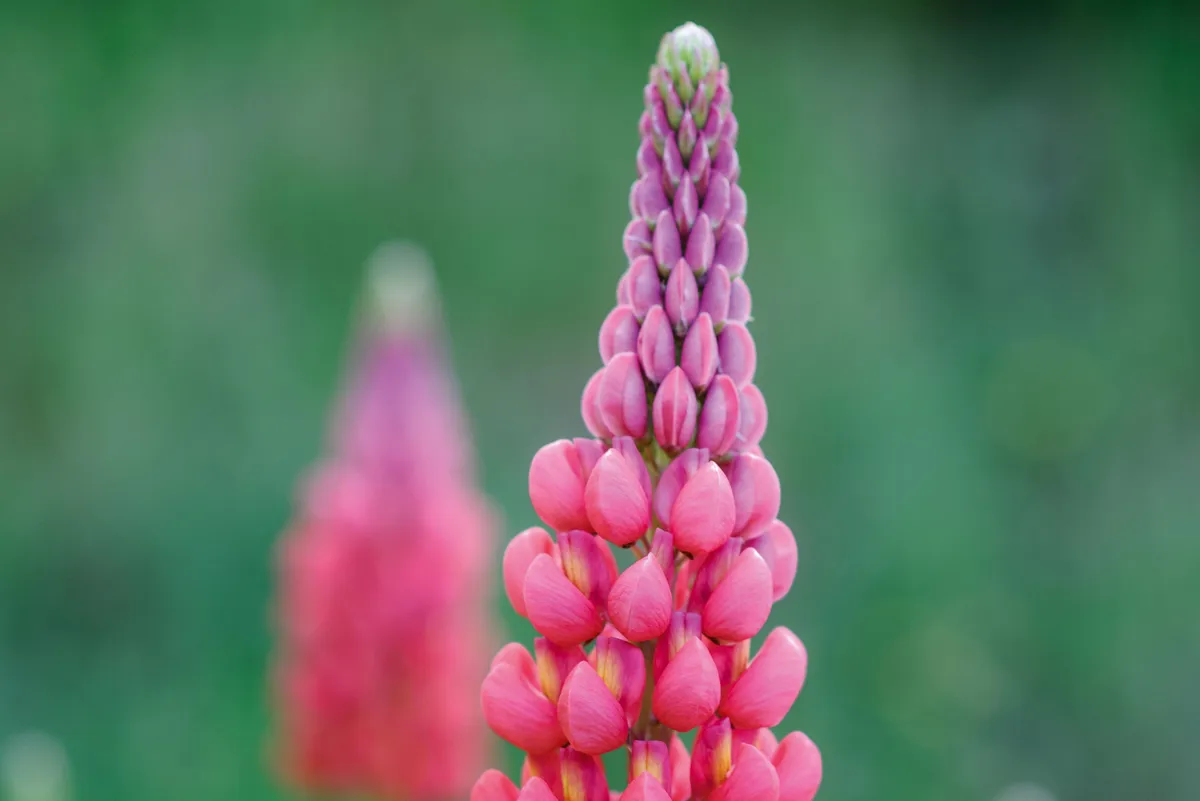
What to do with lupins after flowering
Cut back the flower stems down to the base as soon as the flowers are finished. Not only are they ugly but the masses of seed the plant produces eventually weakens it and so shortens its life.
Lupins in pots
You can grow lupins in pots, either as bedding in late spring or summer or as a permanent plant. Lupins have long tap roots, so choose a large pot.
Lupin problems
Slugs and snails adore munching on lupins, especially young growth, so be sure to protect your plants. Discover the 10 best organic slug controls.
North American lupin aphids arrived in Britain 30 years ago and are now widespread. These are about 4mm long, much larger than most aphids, and left unchecked will rapidly form large colonies that cause the plant to wilt. According to the Royal Horticultural Society, native hoverflies and ladybirds are not drawn to lupin aphids. As soon as you see them (they’ll probably be hiding on the undersides of the leaves) wipe them off or spray with soapy water.
The aphids help the spread of viruses, and in particular, the cucumber mosaic virus. Despite its name the virus attacks a wide range of plants, including lupins. The first sign is yellow mottling on the leaves, followed by distorted foliage and stunted growth. Dig the plant up and burn it to kill the virus.
Everything you need to know about lupins
When do lupins flower?
Lupins flower in late spring and early summer.
Are lupins perennial?
Lupins are perennial and will come back year after year. They will die back in winter, re-emerging in spring.
Lupin types

Before Russell began his breeding programme, the lupin best known to gardeners was Lupinus polyphyllus, a North American species brought to Britain in the 1820s by plant explorer David Douglas. The lupins produced by modern plant breeders can be traced back 100 years to George Russell’s imagination. Most plants that are available at nurseries and garden centres are seed-grown and several seed strains have been developed by plant breeders.
The Gallery Series is a group of low-growing lupins, usually about 50cm tall, that have mainly yellow, orange or red flowers. They will flower during the first year after the seed is sown. The seed is often sold as a mixture but you can occasionally find single-colour seed. Lupinus ‘Gallery Red’ is worth growing for the intense colour of the flowers.
The oddly named Band of Nobles Series seed strain is much taller, with plants growing as high as 1.2m. Again, they are usually sold as mixed seed but several of the series have been named. Lupinus ‘The Governor’ is particularly striking, with flowers that have two white upper petals and three indigo-blue lower ones.
The Tutti Frutti seed range contains a high proportion of plants that have bi-coloured flowers.
14 lupins to grow
Lupinus ‘Masterpiece' PBR*
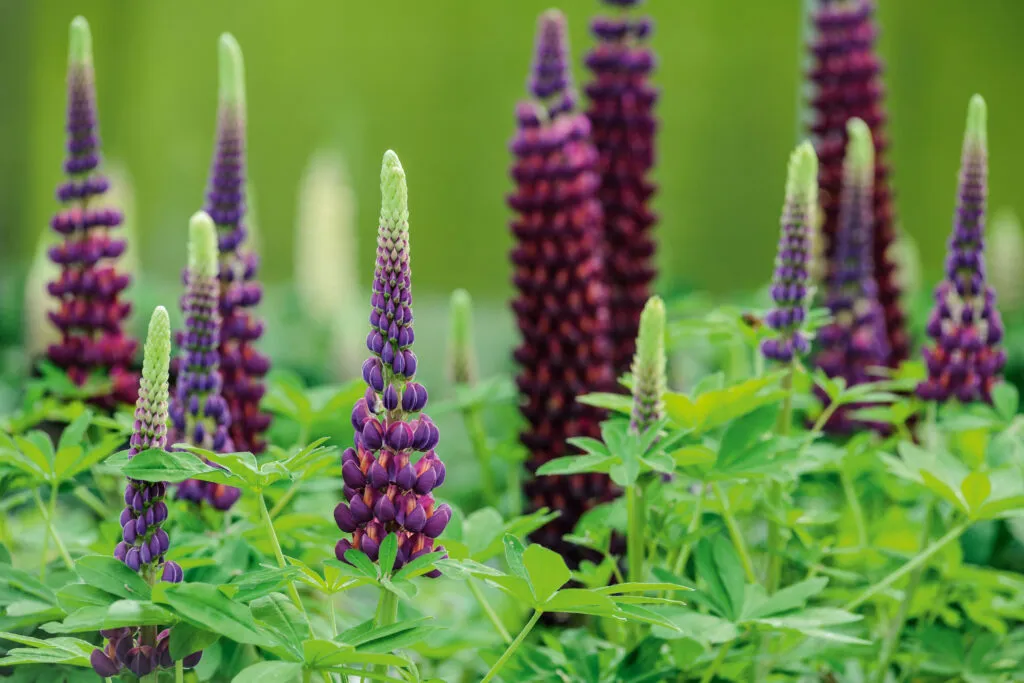
The intense purple spires of this recently introduced hybrid have made it an instant hit. Each petal has a glowing orange fleck at the base. Grows to about 1m tall and flowers in June and July. *Plant breeder’s rights claimed
Lupinus ‘African Sunset’

The flowers are yellow and pink, the latter fading to peach as the plant matures. Usually about 60cm tall.
Lupinus ‘Red Arrow’ PBR

Brilliant red flowers on dark stems in early May. Grows to 90cm tall.
Lupinus ‘Towering Inferno’
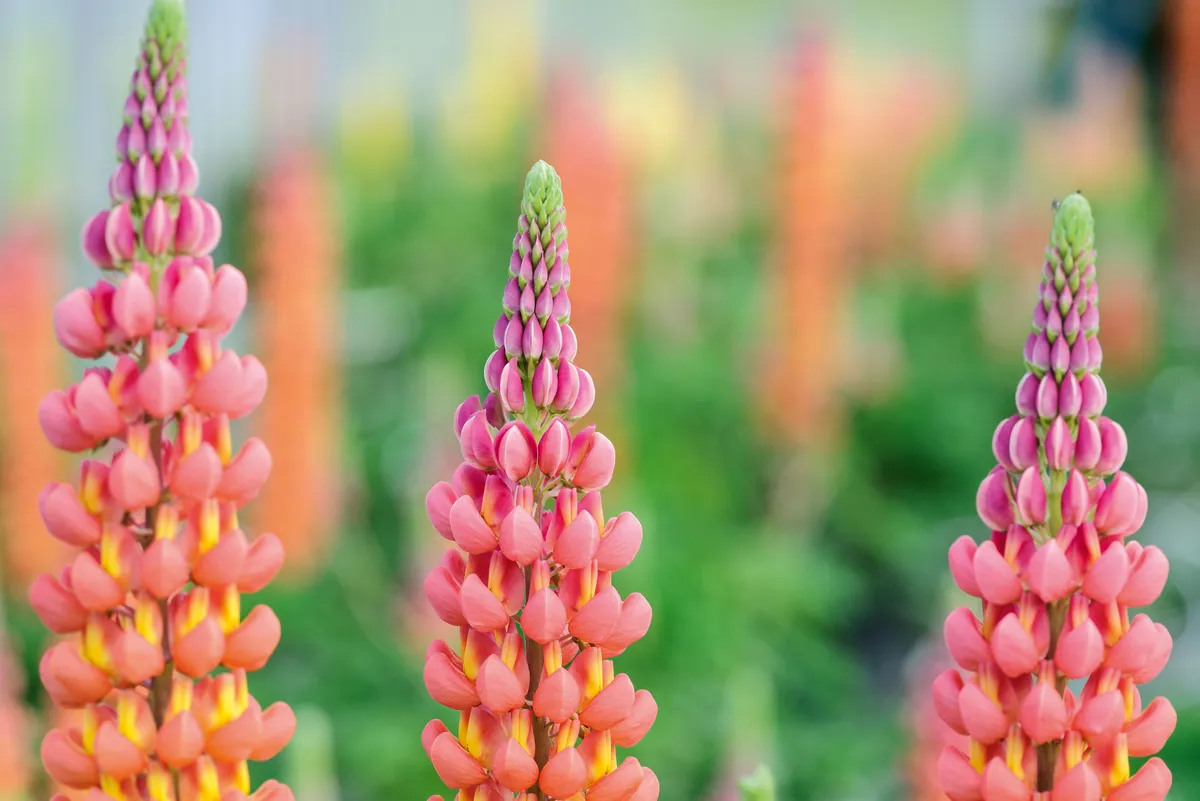
Deep orange flowers that are speckled with yellow at the base of the petals. Flowers in June and grows to 90cm tall.
Lupinus ‘Tequila Flame’ PBR

A startling combination of bright red and yellow flowers on a 60cm-tall stem. Flowers in July.
Lupinus ‘Polar Princess’
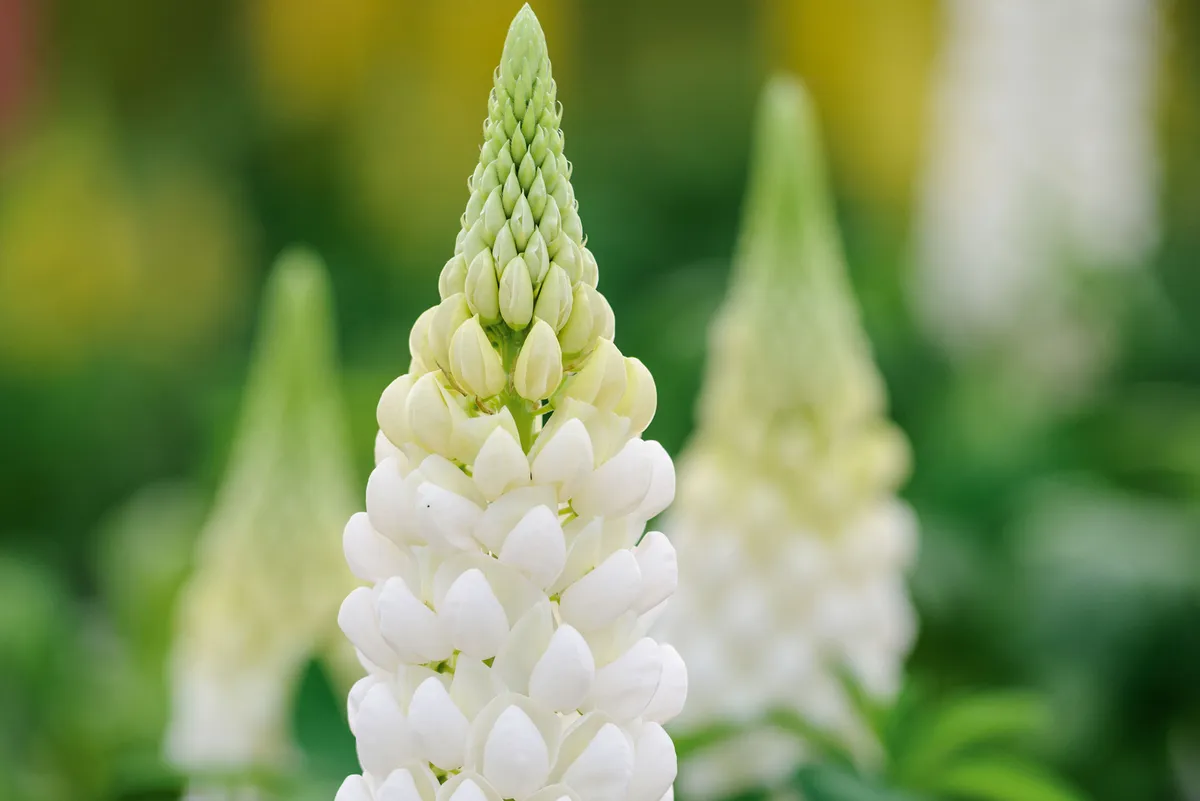
A vigorous hybrid with pure white flowers, densely packed along the stem. Flowers in July and grows to 75cm tall.
Lupinus ‘Desert Sun’ PBR

A floriferous hybrid with buttery-cream buds that open to yellow flowers. First flowers in early June. Grows to 1m tall.
Lupinus ‘Cashmere Cream’
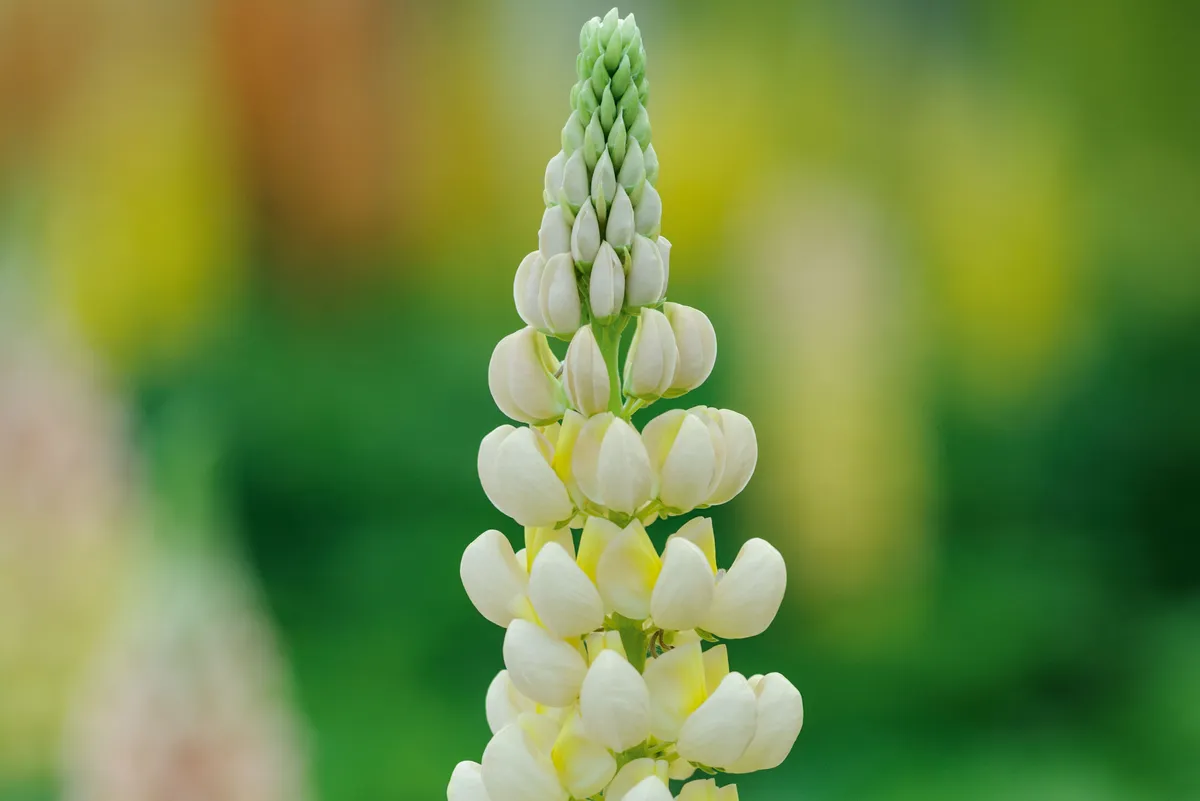
Narrow spikes of green-tinged buds that open to creamy white flowers in mid June. Grows to 1m tall.
Lupinus ‘Saffron’ PBR
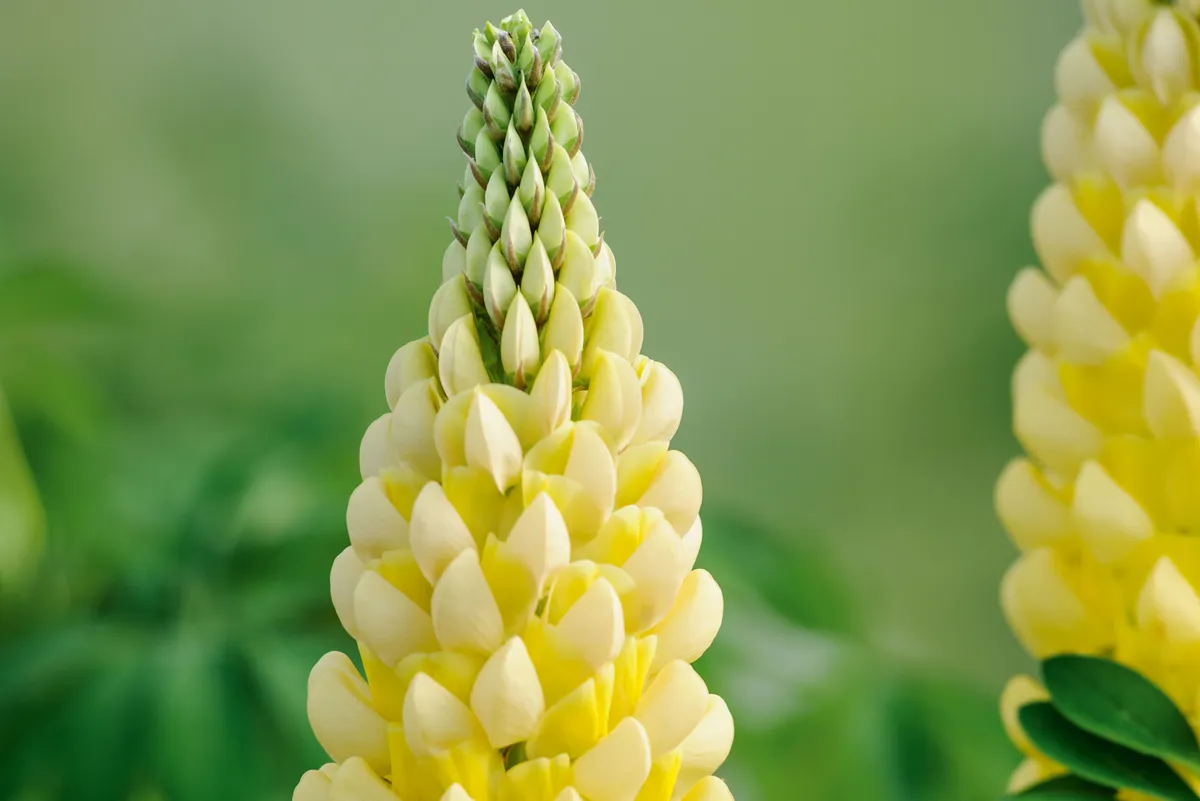
Pale creamy-lemon flowers on short, slender spikes in late June. Grows to 60cm tall.
Lupinus ‘Bruiser’
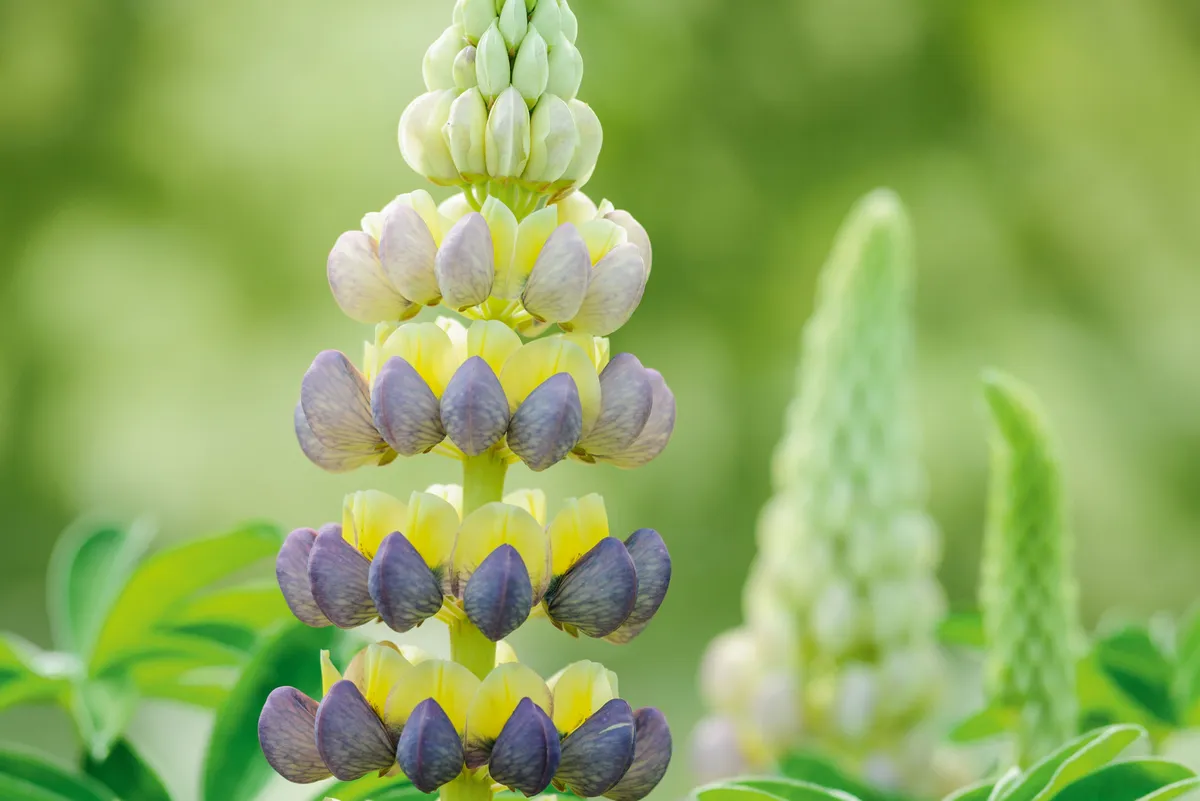
Pale yellow buds open to yellow and purple bicoloured flowers that darken with age. Flowers late June and grows to 60cm tall.
Lupinus ‘Neptune’

Large blue bells mottled with white to create a polka-dot effect. Flowers from late June and grows to 75cm tall.
Lupinus ‘Jupiter’

A new introduction from Westcountry Lupins with startling bicoloured flowers. Grows to 1m tall and flowers in July.
Lupinus ‘Persian Slipper’ PBR
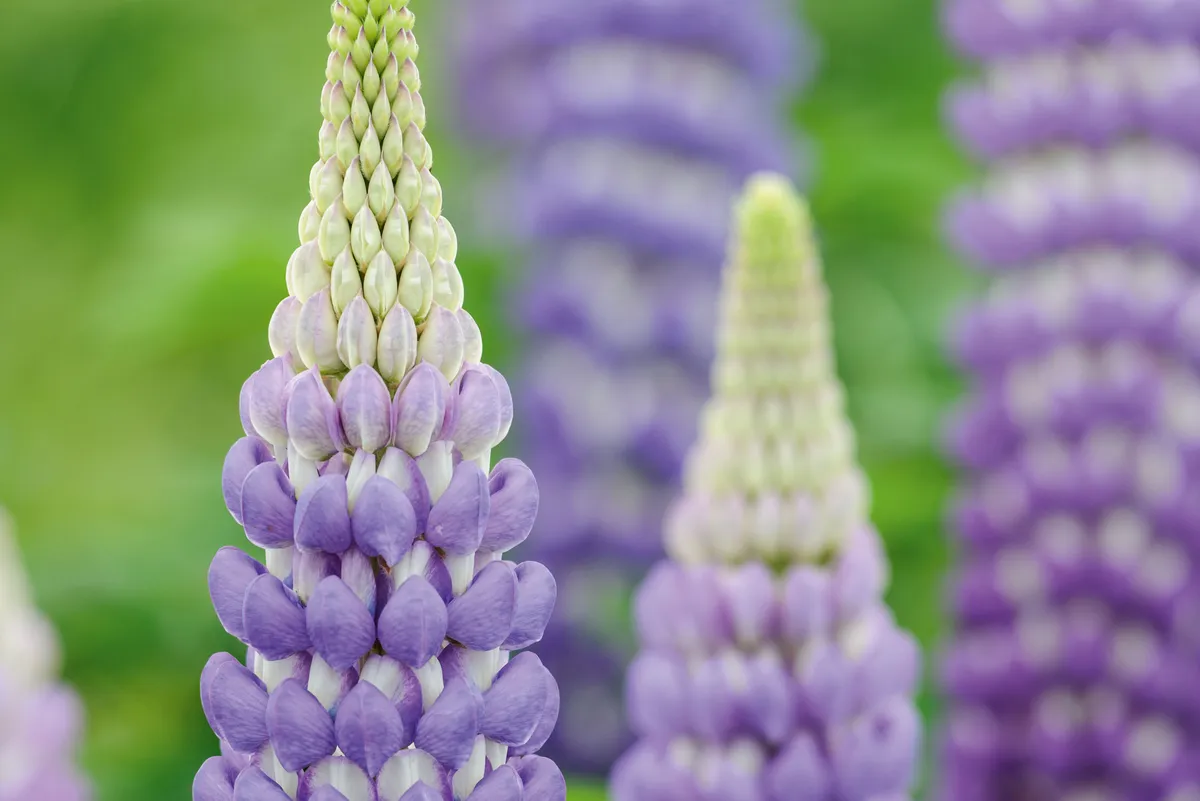
A compact hybrid with short fat flower spikes in Wedgwood blue. Flowers in June and grows to 60cm tall.
Lupinus ‘Manhattan Lights’ PBR

The tips of the petal, known as the balloon, are imperial purple with a satin sheen; the base of the petal (the fall) is soft yellow: an exotic combination that makes a dramatic statement. Grows to 90cm in height.
Where to see lupins
Westcountry Lupins, Donkey Meadow, Woolsery, Bideford EX39 5QH. Tel 01237 431111, westcountrylupins.co.uk. Customers can visit from March to mid-July but should ring first. Orders are sent out all year round or may be picked up with prior arrangement.
Where to buy lupins
Westcountry Lupins - see above.
Woottens of Wenhaston, Blackheath, Wenhaston, Halesworth IP19 9HD. Tel 01502 478258, woottensplants.com
